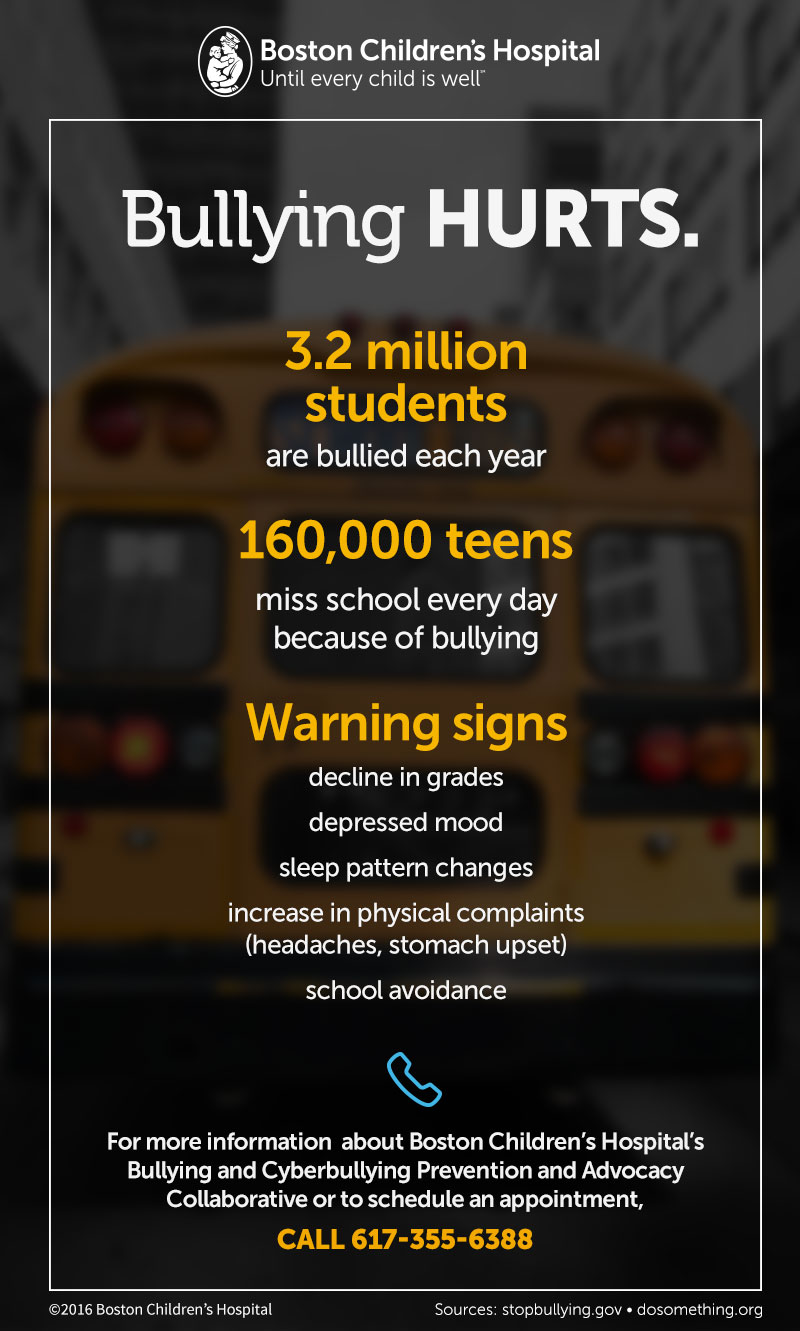What is Bullying? | Overview
According to the Centers for Disease Control and Prevention, bullying is any unwanted aggressive behavior by another child or group of children, who are not siblings or current dating partners, involving an observed or perceived power imbalance and is repeated multiple times or is highly likely to be repeated.
Bullying can inflict physical, psychological, social, or educational harm, or distress on the child who is targeted.
Cyberbullying
Cyberbullying is electronic aggression that occurs through the use of technology — hurtful words, photos, or video sent through email or via instant or text message, or posted on a website or social media.
Cyberbullying also means today’s students have less refuge from bullying than a generation ago. At one time, children could escape their tormentors at home or the moment they got off the school bus. Today’s victims endure a 24-hour cycle of text messages, emailed photos and videos, and cruel online postings.
Bullying warning signs
Parents and caregivers should be on alert for behavior changes and other signs that a child is being bullied.
Signs may include:
- a decline in grades
- unexplainable injuries
- depressed mood
- a change in eating habits and sleep patterns
- feelings of helplessness or decreased self esteem
- increased physical complaints (headaches, stomach upset)
- school avoidance
- self-destructive behaviors such as running away from home, self-harm, or talking about suicide.
To make an appointment, call the Boston Children’s BACPAC program at 617-355-6388.

